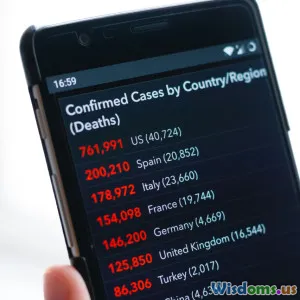
The Rise of Cybercrime Why Hackers Are the New Masterminds
8 min read Explore how cybercrime rises and hackers evolve into strategic masterminds reshaping criminology and crime investigation. (0 Reviews)
The Rise of Cybercrime: Why Hackers Are the New Masterminds
Introduction
In a digital era where information flows seamlessly across the globe, cybercrime has stealthily evolved into one of the most sophisticated and perilous threats facing societies today. Far from lone individuals hacking for curiosity or notoriety, modern hackers have emerged as calculated, ingenious masterminds orchestrating high-stakes criminal enterprises. This transformation is reshaping criminology and crime investigation, compelling authorities to rethink traditional methods.
From ransomware assaults on hospitals paralyzing healthcare services to multinational theft of intellectual property, the rise of cybercrime transcends borders and industries, fueling a new breed of digital villains who outsmart conventional defenses with alarming finesse. This exploration uncovers why hackers have become the reigning strategists in crime, unpacks the implications for law enforcement, and highlights real-world cases illuminating the scale and sophistication of cybercrime today.
The Evolution of Cybercrime: From Hobbyists to Masterminds
Early Days of Hacktivism and Cyber Pranks
In the 1980s and 1990s, hacking was often viewed as a subculture of computer enthusiasts—teenagers and tech hobbyists experimenting with systems. Groups like the Chaos Computer Club or the infamous ‘Masters of Deception’ carried out pranks or protested digital rights issues, rarely anticipating the serious criminal implications their activities would later inspire.
The Shift to Organized Digital Crime
The dawn of the 21st century marked a pivotal turning point. Hackers transitioned from isolated actors to members of organized cybercriminal syndicates. These groups began leveraging methods like phishing, malware, and botnets as scalable tools for profit and disruption. According to a 2022 report by Cybersecurity Ventures, cybercrime damages are projected to cost the world $10.5 trillion annually by 2025, underscoring the economic magnitude and professionalization of these actors.
Geographic and Political Dimensions
Certain regions have become hotbeds for cybercrime activity, partially enabled by geopolitical tensions and limited regulation. The Russian-speaking cybercriminal underground, for example, is widely cited as a powerful ecosystem combining hackers, money mules, and cryptocurrency brokers to conduct fraud and espionage.
Why Hackers Are Considered New Masterminds
Advanced Technical Expertise Combined with Psychological Acumen
Modern hackers have evolved beyond mere coders; they are expert manipulators of both technology and human behaviors. Social engineering techniques—such as spear phishing—exploit psychological vulnerabilities to infiltrate highly secured systems. This dual proficiency demands an interdisciplinary mastery venturing into behavioral psychology, economics, and information warfare.
Innovative Use of Technology
Hackers routinely exploit emerging technologies—like artificial intelligence, the Internet of Things (IoT), and blockchain—to invent new attack vectors. For example, ransomware operators deploy AI-driven tools to identify weak systems automatically, rapidly encrypt data, and demand cryptocurrency ransom payments with minimal human intervention.
Entrepreneurial Crime Models
Cybercriminals have adopted entrepreneurial business models, cultivating client bases and subcontracting specialized tasks. “Ransomware-as-a-Service” (RaaS) platforms provide affiliate hackers access to malware tools for a cut of the profits. This formalization of criminal enterprise amplifies their reach and resilience.
Real-World Case Study: The Colonial Pipeline Attack
In May 2021, the ransomware attack on Colonial Pipeline, a critical U.S. fuel supplier, exemplified hacker masterminding. The DarkSide ransomware group executed a targeted, highly coordinated assault, causing widespread fuel shortages and economic ripple effects. This incident demonstrated not just technical expertise but strategic timing to maximize impact and pressure polycentric negotiation strategies.
Challenges in Criminology and Crime Investigation
Jurisdictional Complexities
Cybercriminal networks operate transnationally, often hiding behind proxy servers in countries with limited law enforcement cooperation. The decentralized nature of internet infrastructure allows attackers to attack from anywhere, complicating jurisdictional authority and enforcement.
Attribution Difficulties
Pinpointing responsibility for a cyberattack remains a monumental task. Sophisticated hackers employ layers of anonymization techniques such as VPNs, TOR networks, and encrypted communications, resulting in prolonged investigations and frequent misattributions.
Rapidly Changing Technologies
Law enforcement agencies must continually upgrade their technical capabilities. Traditional policing models founded on physical evidence and eyewitness testimony struggle against virtual trails that can be erased or fabricated.
Examples of Law Enforcement Innovation
- The FBI’s collaborative takedown of the Emotet malware botnet in 2021, which involved coordinated international law enforcement efforts and cyber specialists.
- Europol’s establishment of the European Cybercrime Centre (EC3) that integrates intelligence sharing among member states.
The Societal Impact and Future Outlook
Economic and Psychological Consequences
Beyond monetary losses—estimated in billions annually—cybercrime erodes trust in digital infrastructures, undermines governments, and jeopardizes critical public services. Victims, both organizations and individuals, often face lingering consequences including identity theft, psychological distress, and reputational damage.
Toward Proactive Defense Strategies
The battle against cybercrime increasingly emphasizes proactive and preventive measures:
- Ethical hacking and penetration testing to identify vulnerabilities before criminals do.
- Greater emphasis on cybersecurity education and workforce development.
- Advanced AI-powered threat detection to analyze network anomalies.
Policy and International Cooperation
There is a growing consensus that combating cybercrime requires holistic global cooperation. Initiatives like the Budapest Convention on Cybercrime aim to harmonize legal frameworks, enhance cross-border investigations, and enable efficient extradition processes.
Conclusion
The rise of cybercrime signifies a paradigm shift that challenges the conventional frameworks of criminology and crime investigation. Today’s hackers are not mere vandals of digital information; they are sophisticated masterminds blending technology with strategy, psychology, and organized crime tactics. Recognizing and responding to this new reality demands an interdisciplinary approach that leverages technological innovation, international collaboration, and adaptive legal mechanisms.
As individuals and organizations continue embedding technology into all facets of life, the imperative to understand and counteract these digital masterminds intensifies. Through informed awareness, enhanced security practices, and robust investigative adaptations, society can begin to mitigate the profound risks posed by cybercrime’s elusive architects and safeguard the digital future.
References:
- Cybersecurity Ventures, "2022 Official Annual Cybercrime Report."
- FBI, "Operation EMOTET Takedown Press Release, 2021."
- Europol, "European Cybercrime Centre Overview."
- Colonial Pipeline Incident and Analysis, various sources, 2021.
- Budapest Convention on Cybercrime, Council of Europe.
Rate the Post
User Reviews
Popular Posts





















